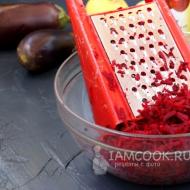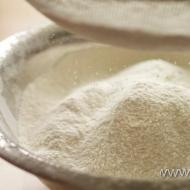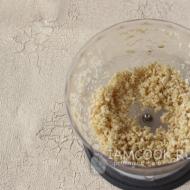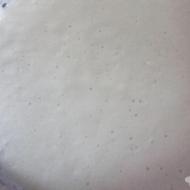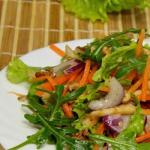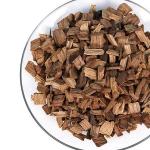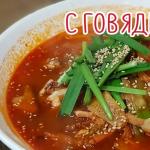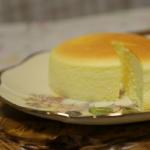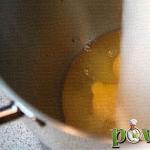
Romano cheese. Oak barrels. Pecorino - what is it?
Preparation of moonshine and alcohol for personal use
absolutely legal!
After the collapse of the USSR, the new government stopped the fight against moonshine. Criminal liability and fines were abolished, and the article banning the production of alcohol-containing products at home was removed from the Criminal Code of the Russian Federation. To this day, there is not a single law that prohibits you and me from engaging in our favorite hobby - preparing alcohol at home. This is evidenced by the Federal Law of July 8, 1999 No. 143-FZ “On the administrative liability of legal entities (organizations) and individual entrepreneurs for offenses in the field of production and circulation of ethyl alcohol, alcoholic and alcohol-containing products” (Collected Legislation of the Russian Federation, 1999, No. 28 , art. 3476).
Extract from the Federal Law of the Russian Federation:
“The effect of this Federal Law does not apply to the activities of citizens (individuals) producing products containing ethyl alcohol for purposes other than sale.”
Moonshining in other countries:
In Kazakhstan in accordance with the Code of the Republic of Kazakhstan on Administrative Offenses dated January 30, 2001 N 155, the following liability is provided. Thus, according to Article 335 “Manufacture and sale of home-made alcoholic beverages”, illegal production of moonshine, chacha, mulberry vodka, mash and other alcoholic beverages for the purpose of sale, as well as the sale of these alcoholic beverages, entails a fine in the amount of thirty monthly calculation indices with confiscation of alcoholic beverages , apparatus, raw materials and equipment for their manufacture, as well as money and other valuables received from their sale. However, the law does not prohibit the preparation of alcohol for personal use.
In Ukraine and Belarus things are different. Articles No. 176 and No. 177 of the Code of Ukraine on Administrative Offenses provide for the imposition of fines in the amount of three to ten tax-free minimum wages for the production and storage of moonshine without the purpose of sale, for the storage of devices* for its production without the purpose of sale.
Article 12.43 repeats this information almost word for word. “Production or acquisition of strong alcoholic beverages (moonshine), semi-finished products for their production (mash), storage of apparatus for their production” in the Code of the Republic of Belarus on Administrative Offenses. Clause No. 1 states: “The production by individuals of strong alcoholic drinks (moonshine), semi-finished products for their production (mash), as well as the storage of devices* used for their production, will entail a warning or a fine of up to five basic units with confiscation of the specified drinks, semi-finished products and devices."
*You can still purchase moonshine stills for home use, since their second purpose is to distill water and obtain components for natural cosmetics and perfumes.
Pecorino is an Italian hard cheese made from sheep's milk. Why does it cheer me up every time I say its name? Because a picture of a cartoon sheep immediately appears in my head, because in Italian “sheep” is “pecora”.
So, we quickly figured out half the title of the article. Now let's move on to the official part.
Like all major Italian products, Pecorino is protected by a Protected Designation of Origin (DOP) certificate. That is, these types of cheese can only be produced in a clearly designated area. And if you buy Pecorino, which is made in Poland, then know that it is a fake, but not an original product. Therefore, taste qualities may differ significantly.

However, the taste of Pecorino cheese may differ depending on the region of origin. After all, each part of Italy has its own characteristics of livestock farming, different conditions for keeping animals and producers’ ideas about the final product.
The Pecorino family usually includes four types of cheese - Pecorino Romano, Pecorino Sardo, Pecorino Toscano, Pecorino Siciliano.
- Pecorino Romano – produced on the island of Sardinia, the region of Lazio (the center of which is Rome) and in the province of Grosseto (Tuscany). It is generally accepted that Pecorino cheese began to be produced on the outskirts of Rome back in the days of the legionnaires and, accordingly, was part of their daily diet. We find the first mentions of this type of cheese in the works of Hippocrates and Pliny the Elder. It is noteworthy that in Sardinia pecorino began to be produced only at the end of the 19th century. Also at this time, Italian cheesemakers began to introduce pecorino to the American market, where it took one of the leading positions.

Pecorino Romano requires at least five months and the loving hands of a cheesemaker to mature. Indeed, even in our time it is necessary to manually add the starter, the enzyme from lamb rennet, and then the salt. By the way, lambs must be raised only in the cheese production area. That is, lambs delivered, for example, from the North of Italy cannot participate in the process.
After the starter and salt have been added, cylinders are formed from the cheese mass, which in turn are placed in molds and sent to ripen. One such Pecorino circle can weigh from 20 to 45 kilograms. The ripening period does not exceed 12 months.

The color of this type of cheese is white with a slight creamy tint. The cheese tastes salty, especially if you are used to lightly salted foods. Therefore, we can immediately say that Pecorino cannot please everyone equally. I also advise you to be aware of the high salt content if you use pecorino in any dish. Be careful not to add salt! Otherwise, your guests will joke about your state of love all evening. It is best to combine Pecorino Romano with crackers, nuts, unsweetened fruits and dry wines.
2. Pecorino Sardo - sheep cheese, which, as the name suggests, is produced on the island of Sardinia. It is noteworthy that the history of cheese making on this island begins only at the end of the 18th century.

The ripening period for Pecorino Sardo can range from a month to a year. Accordingly, the longer the aging, the harder and denser the cheese becomes, and its final price also increases. Depending on the ripening period of cheese, two subtypes are distinguished - Dolce and Maturo. Dolce, sweet, is aged for 20-60 days. Maturo, mature, 4 to 12 months. The second type of Pecorino Sardo is usually exported.

By the way, it is customary to add Pecorino Sardo and Parmigiano Reggiano cheese to Ligurian pesto alla genovese.
In the future, Pecorino Sardo can serve as the basis for the infamous cheese with the larvae of the cheese fly Casu Marzu.
3. Pecorino Toscano is the third cheese of the Pecorino family in our review, produced in one of the most famous regions of Italy, as well as partly in Lazio and Umbria.
Tuscan Pecorino is divided depending on the ripening period into fresh (fresco) and mature (stagionato). The first variety ripens for at least 20 days, and the second for at least 4-6 months.

Pecorino Toscano is kept in small round molds, pre-greased with olive oil. Mature cheese has a pronounced piquant taste.
Each head of Pecorino Toscano weighs from one to 3.5 kg, dimensions reach 15-22 cm in diameter and 7-11 cm in height.
If you want something more refined and refined, then you should turn your attention to such a subspecies of Tuscan pecorino as Pecorino al Tartufo . As you may have guessed from the name, this cheese contains white and black truffles.

Also, do not forget about such a subspecies as Pecorino Senese . This cheese is grated with tomato puree and has a characteristic color.

Separately, I would like to mention the Pecorino Toscano subspecies, which is not included in the DOP category. This is famous Pecorino di Pienza , named after the city of the same name. This cheese is usually aged in oak barrels. History says that previously shepherds stored cheese in barrels, layering it with leaves and ash. Thereby allegedly improving the taste of Pecorino. In our time, such cheese is aged for at least 90 days.

All these cheeses can be used young in the preparation of everyday dishes. But most often, locals use mature Pecorino Toscano as an analogue of expensive Parmesan.
4. Pecorino Siciliano - the fourth and last in the pecorino family, produced in Sicily using ancient technology.
Like many centuries ago, the production process begins in October and ends only in June. After adding rennet, the cheese mass is placed in wicker baskets, which in turn are placed on wooden boards.

As Pecorino Siciliano matures, the cheese mass is constantly rotated in baskets, thereby forming the typical round shape. The cheese is then salted and aged for another 4 months.

A head of finished Pecorino Siciliano cheese weighs 4-12 kg. The cheese is easily recognizable by the wrinkled yellow edge of the head.
Attention! There are subspecies of Pecorino Siciliano that are not included in the DOP category. Namely, unaged (tuma, primo sale) and semi-aged (secondo sale).
You can't go wrong adding grated Pecorino Siciliano to first courses or using it as an accompaniment to the win-win combination of freshly baked bread and extra virgin olive oil.
For all types of Pecorino, there is an unspoken rule for pairing with wines - choose red wines (less often white) produced locally.

A hard, salty cheese made from sheep's milk was first prepared in the vicinity of Rome. The locals loved the product so much that it was added to most Italian dishes. There is an opinion that in the classic version they use not, but one of the varieties of pecorino.
The product is still prepared by hand. It takes at least 5 months to mature. Long exposure adds piquancy, sharpness and significantly increases its cost.
What do you need to know about the product, how do the varieties of Pecorino differ from each other, and what happens to the human body when consuming cheese for a long time?
General characteristics of the product
Pecorino is the general name for a family of Italian cheeses. Italian Pecorino is made from sheep's milk, and in some cases, herbs or spices are added. The product has a grainy structure that becomes more noticeable as it ripens. Ripe cheese literally falls apart into small bars without losing its elasticity and dense consistency.
Etymological information. The name comes from the Italian word with ancient Roman roots “pecora” - sheep.
Pecorino is much healthier than most Italian cheeses. The main ingredient is sheep's milk. It is rich in essential calcium (Ca), phosphorus (P), retinol (A), ascorbic acid (C), and tocopherol (E).
In most Italian provinces, pecorino is served as an independent snack or dessert. The product goes well with homemade, all types of nuts, and. But the use of pecorino is not limited to bruschetta or a cheese plate. Cheese is added to soups, cold and warm salads. Crushed pecorino is an eternal companion to traditional spaghetti. When choosing drinks for an Italian evening, focus on classic Chianti. This dry red wine from Tuscany is the most preferred option for all types of Pecorino.
Interesting: a dense head of aged pecorino is used as a sports equipment in the Italian game of Ruzzola. The cheese is tied to the player's hand with a special ribbon. The participant must throw the product as far as possible. The winning team receives social approval and that very wheel of cheese.
Varieties of Italian cheeses
 Different parts of Italy use different recipes for sheep's cheese. Due to geographical features, there are 4 varieties of Pecorino on the market. Among them: Romano, Sardo, Toscano, Siciliano.
Different parts of Italy use different recipes for sheep's cheese. Due to geographical features, there are 4 varieties of Pecorino on the market. Among them: Romano, Sardo, Toscano, Siciliano.
The Pecorino Romano variety is especially popular. This is a salty cheese that is prepared on the island of Sardinia and in the Italian region of Latium. The dense heads of Romano exude a subtle, pungent odor. The product is famous for its characteristic salty taste. The cheese matures within 8-12 months. It is made in large cylindrical molds. The weight of one block of cheese varies from 5 to 22 kilograms, the height is 30 centimeters, and the diameter of the head is 20 centimeters. Romano has a smooth crust and a dense, uniform structure. It is served as a dessert with honey and jams, and added to soups, salads, meat and fish dishes.
Interesting: Romano is popular not only in Spain, but also in the USA. Americans have been exporting the product since the 19th century and eat it as often as national dishes.
A less popular cheese is Pecorino Siciliano. It is produced in Sicily in two variations: tuma and primo sale. Tuma is a young, unsalted product that is known for its delicate structure and soft crust. Prima sale is a more seasoned and salty cheese with a bright flavor and aroma palette. If Siciliano matures for more than 2 years, it is called canestrato. The product is left to mature in tall cylindrical heads. The output is voluminous bars of cheese weighing 5-12 kilograms and 10-18 centimeters high.
The third type of product is sardo. This is a boiled pressed cheese, the production of which is controlled by Sardinia. Sardo is considered the most delicate cheese of the pecorino family. It is used as a base for the preparation of the exotic cheese product casu marzu. This is a semi-decomposed mass, inside which cheese fly larvae live. Sardo has several levels of maturation, at each of which the cheese is ready for use. The older the block, the denser the structure and the more piquant the taste.
Another variation of pecorino is Toscano. This is a pressed or soft cheese from the Tuscan settlement of Siena. The cheese is consumed daily not only in Tuscany, but also in the surrounding areas of Umbria and Lazio. Aged Toscano is called stagionato. The product matures for about 6 months in miniature forms that are greased and strewn with ash. The finished bar fills the taste buds with nutty, buttery, and aged, ashy notes. The younger the cheese, the sweeter, more tender, and milkier its taste and structure. Many people prefer the neutral version of Toscano rather than the multi-component staggionato.
Pecorino contains more than just sheep's milk. Enthusiasts create amazing flavor combinations from traditional Italian products and spices. Chopped black pepper, red slices, nuts, and tomato puree are often added to cheese wheels. Cooks add only fresh natural products, which guarantees the quality and benefits of the cheese.
Interesting. All varieties of Pecorino are given a special status - PDO (Protected Designation of Origin). This means that the cheese is protected by origin. Its production can only be carried out on clearly defined Italian lands, to which pecorino belongs. Making cheese outside the permissible zone without special permission is a crime for which liability is provided.
Chemical composition of Pecorino Romano 27% fat
| 86 | |
| 1064 | |
| 41 | |
| 1200 | |
|
Indeed, sheep milk contains much less harmful substances that an adult cannot break down and absorb. Moreover, the product's nutrient balance is replete with vitamins and minerals that we cannot generate on our own. It has much less than most cow's milk cheeses, but high levels of cholesterol and fat - 30 milligrams and 8 grams, respectively, per 30 grams of pecorino. We are not able to follow the complete production process of dairy products. There are no guarantees that the animals are kept in proper conditions, fed healthy feed without impurities and harvested exactly as much as the sheep can produce. If these requirements are not met, then hormones, stimulating enzymes and toxic substances that are released by animals in stressful situations end up on our plate. It is impossible to predict their impact on humans. Common symptoms are sudden weight gain, hormonal problems, and uncontrolled appetite. Try to reduce the consumption of cheeses, regardless of the composition of the raw materials, to 20-50 grams per day. This way you can satisfy your hunger, satisfy the psychological need for your favorite product and protect the body from oversaturation with fats/salt/hormones of animal origin. | |
The word pecora means sheep in Italian and means livestock in Latin.
First of all, we note that pecorino in Italian it is more correct to call "cacio", but not "formaggio", as most modern cheeses are called. It was the “cacho” that was first made by the mythological shepherd, the Cyclops Polyphemus. In the central and southern regions of modern Italy, the name of the product comes from the Latin caseus. The term "formaggio" (from the Latin formaticus) appeared much later, in the Middle Ages, its source is called the Po River Valley, explaining its origin by reference to the shape of the cheese head, similar to the shape of round bread.
From Tuscany and further south pecorino, without a doubt, the most common: moderately moist, moderately spicy - a constant companion of beans and pasta. Residents of the northern part of the country are accustomed to a varied variety of this sheep's cheese, which varies from the very hard mountain variety to the creamy lowland variety. This does not confuse at all, and even pleases local gourmets who are well versed in this diversity.
Each region has its own understanding of the correct pecorino, which depends on the conditions under which the sheep are kept, their diet, but most of all, on the traditions of making cheese. It is worth noting that almost throughout Italy, the shepherds of sheep flocks are immigrants from Sardinia, who nevertheless try to adopt the local manufacturing style pecorino, preventing the “sardination” of mainland varieties.
Pecorino rich in essential amino acids, vitamins A, B, PP, C, E, calcium and phosphorus, which makes this cheese a dietary product.
There are four main varieties pecorino, each of which is protected by a Certificate of Protected Designation of Origin (DOP), the status of which is confirmed by the laws of the European Union.
Pecorino Romano probably the most famous variety outside of Italy pecorino. Best known Pecorino Romano in the United States, which has been the most important export market for this cheese since the 19th century.
Largest quantity Pecorino Romano produced on the island of Sardinia, although its production is also allowed in the Lazio region and in the Tuscan province of Grosseto.
Aged varieties pecorino, produced and distributed from Genoa and Liguria, also made from Sardinian pecorino.
Other varieties Pecorino DOP are Pecorino Sardo from Sardinia; Pecorino Toscano , Tuscan relative Pecorino Sardo(which is also made exclusively by Sardinians who emigrated to Southern Tuscany with their herds in the 1950s), and Pecorino Siciliano (or in Sicilian Picurinu Siciliana) from Sicily.
Also cheeses Pecorino are separated depending on exposure. The ripest, most seasoned cheese is called stagionato, having a hard, but grainy-crumbly, oily consistency and a nutty flavor. Two other types" semi-stagionato" (semi-aged) and " fresco" (young) have a softer consistency and a creamy milky taste.
In the South, there is a tradition of adding black pepper or red chili pepper flakes to pecorino. Nowadays, many other additives have begun to be used in production. pecorino, for example, walnuts, arugula or pieces of white and black truffle.
In Sardinia, in Pecorino Sardo The larvae of cheese flies are specially introduced to produce a local delicacy called Casu marzu, which translates from Sardinian as “rotten cheese.”
Good aged Pecorino (stagionato) often ends meals. It is usually served alongside pear and walnuts or drizzled with tart chestnut honey.
Pecorino often consumed after pasta dishes, and is also used as an alternative to the more expensive Parmesan in most regions of Italy from Umbria to Sicily. And in some pasta dishes typical of Rome and all of Lazio Pecorino is more preferred, for example Pasta with sauce "all"amatriciana", pasta with cheese and pepper, and pasta "alla Gricia".
Young pecorino combined with tomatoes and basil makes a great appetizer. A classic Tuscan dish is Pecorino with green beans (Pecorino con i baccelli). For dessert you can offer pecorino with fruits, wild berries, marmalade. Unexpected and very tasty dessert Pecorino with honey (Pecorino al miele). Baking is popular in Sardinia pecorino - Casadinas.
White wines are more suitable for young cheese: Bianco di Pitigliano, Monteregio, Montecucco Bianco, Dolcetto d'Alba, Refosco, Vernaccia di San Gimignano.
Durum varieties pecorino often served after meals. Red wines go well with this cheese: Chianti Classico, Barolo, Morellino di Scansano, and on special occasions - Brunello di Montalcino.
Hard cheeses pecorino added in grated form to ribollita, different types of pasta (for example, cannelloni, cannelloni with milk lamb ragout), meat dishes (stuffed beef, pork rolls), pizza (for example, Apulian).
A little more about Pecorino Romano
Pecorino Romano - hard, salty italian cheese, made from sheep's milk (the Italian word Pecora translates to "sheep"), is suitable mainly for grating.
Pecorino Romano- the most famous of all varieties pecorino and an important part of Roman cuisine. A wheel of cheese reaches a mass of 33 kilograms, and the product is used mainly in grated form as one of the ingredients of various dishes. Unfortunately, only 10% of what is produced today Pecorino Romano can be called traditional cheese, the vast majority is made from pasteurized or thermized milk, which is allowed by Italian law.
In production Pecorino Romano curdled milk is heated to 45 °C, and after a day it is freed from whey and pressed. After 90 days of ripening, the product becomes quite dry and salty. After this, the cheese wheels are placed in chambers with low temperature and high humidity, where they reach an age of 10-12 months or even more. Sometimes they are covered with film. matured Pecorino Romano It has a salty spicy taste, a whitish tint and a consistency that makes it easy to grate cheese.
Pecorino Romano for many centuries they were produced on the outskirts of Rome, in Lazio. But in 1884, the city council of Rome banned the salting of cheese directly in stores, and because of this, many producers moved to the island of Sardinia.
Pecorino Romano produced exclusively from the milk of sheep raised in the plains of Lazio and Sardinia. His produced between November and the end of June, when sheep are free to graze on natural pastures. The largest cheese production is now located on the island of Sardinia, especially in the commune of Gavoi.
Pecorino Romano was one of the main products in the diet of legionnaires of Ancient Rome, who took this cheese with them on campaigns. Today it is still produced according to the original recipe and is one of the oldest cheeses in Italy.
Pecorino Romano most often used for sprinkling pasta dishes, like the famous Parmigiano Reggiano (Parmesan). An incomparably aromatic, pleasantly spicy and salty taste is very characteristic of Italian cuisine. Exactly Pecorino Romano, most preferred for some pasta dishes with tasty sauces that are of Roman origin, such as bucatini all'amatriciana.
The sharpness of the cheese depends on its ripening period, which varies from five months for cheeses that are served as a snack and up to twelve months for cheese that is grated. During this time, its characteristic taste and aroma develop.
Pecorino Romano salty, with a fruity flavor, the cheese becomes more and more spicy over time. The color of the cheese rind depends on its degree of maturity; it may be covered with a protective coating of lard or vegetable oil. The color of the cheese is white or pale yellow, with uneven, small holes. The same cheese made outside the Lazio region is called Pecorino tipo Romano.
Pecorino Romano should not be confused with Pecorino Toscano(from Tuscany) or Pecorino Sardo(from Sardinia). Unlike Pecorino Romano, these cheeses (which are not particularly salty) are typically eaten as an appetizer or on sandwiches.
Cheese production method Pecorino Romano was first described by the ancient Roman authors Varro and Pliny the Elder about 2000 years ago. This cheese was first made in the countryside near Rome. Nowadays Pecorino Romano especially popular in Central and Southern Italy.
On the first of May, Roman families traditionally eat Pecorino with fresh beans during a day tour of Roman Campania.
Pecorino Romano- cheese that is used traditionally New Haven pizza, also known as " apizza". (New Haven pizza is a type of Neapolitan pizza that is very common in New Haven, Connecticut).
A little more about Pecorino Sardo
Pecorino Sardo , also known as Sardinian flower, is a hard cheese from the Italian island of Sardinia.
Pecorino Sardo made from the milk of Sardinian sheep raised specifically in Sardinia, which are fed only with local herbs.
In 1991 Pecorino Sardo was awarded DOP (Denominazione d'Origine Protteta) status, and in 1996 the European Union confirmed a protected designation of origin for this cheese.
There are currently several different recipes pecorino sardo, but almost all of them have been changed and corrected by modern recommendations and, unfortunately, imply thermization of milk. Unlike previous varieties, this cheese is immediately placed in a warm room after being placed in molds, and is sent to brine only the next day. The ripening period ranges from 8 to 12 months, but can be extended at the request of the manufacturer. The height of the cheese head is 10-15 cm, and its weight is about 3 kilograms. The crust has a brownish tint, the flesh is white or ivory, very dense and slightly spicy.
One of the oldest options pecorino sardo is fiore (fiore) sardo, known to the islanders for more than 3000 years. It is considered an exclusively homemade product, which has allowed it to maintain high quality and unchanged recipe. Lamb or kid rennet is added to the cooled milk (in the latter version the cheese will be spicier), after which it is again heated to steam temperature (35-38 °C). The resulting clot is manually broken into smallest fractions and placed into molds. Within two days, the cheese is subjected to brine or dry salting, and then sent for aging, the minimum period of which is 3 months, but it is preferable to increase the period to 6 months or more.
Cheese head shape fiore sardo almost round and weighs from one and a half to four kilograms. The crust is dark brown and the flesh is pale yellow, very firm, fatty and spicy. The taste of the cheese is not as salty compared to other Pecorino Sardo.
Taste Pecorino Sardo slightly different taste Pecorino Romano, which is also produced on the island of Sardinia. Range of flavors Sardo richer while the taste Romano is much more pronounced and salty.
Pecorino Sardo delicious in certain flavor combinations that Romano can suppress, for example, in pesto sauce(to Ligurian Genoese Pesto sauce traditionally placed Pecorino Sardo And Parmigiano Reggiano), or together with fruit.
Pecorino Sardo- hard cheese made from fresh whole sheep's milk, which is coagulated using rennet. This mixture is poured into containers that give the cheese its characteristic shape. After a short period of soaking in brine, the molds are lightly smoked and left to mature in the cool cellars of central Sardinia.
Pecorino Sardo has several types: Dolce(with green label) is a young (20-60 days) and sweet cheese with a soft structure. Maturo(with blue label) - well-ripened, has a firm structure, salty in taste, sometimes spicy or smoked with the aroma of meadows and pastures (after 12 months or more).
The average weight of the finished product is 3.5 kg: sometimes a little more, sometimes a little less, depending on production conditions. The color of the rind varies from dark yellow to dark brown. The pungency of taste depends on the ripening period of the cheese. The most aged and firm forms are most often found in the United States, where the cheese is very popular.
Pecorino Sardo not as widely known outside of Italy as Pecorino Romano or Pecorino Toscano, although the largest production Pecorino Romano is actually located in Sardinia, and Sardinia is included in the additional production zone Pecorino Romano.
Pecorino Sardo can be processed further into specific cheese Casu marzu, by introducing cheese fly larvae.
A little more about Pecorino Toscano
Pecorino Toscano (Tuscan pecorino) is a hard sheep's milk cheese produced in Tuscany. In 1996, Pecorino Toscano was awarded Protected Designation of Origin (DOP) status.
The largest amount of cheese is made in the heart of the Tuscany region - in Chianti. Tuscans claim that the herbs for which their land is famous give pecorino a special aroma that distinguishes it from other cheeses in this group. Therefore, cheesemakers ensure that the sheep graze unhindered in the meadows.
Just a few years ago, even in Florence it was difficult to find cheeses other than parmesan, mozzarella or gorgonzola. Miniature heads today pecorino toscano(1-3 kilograms) are produced by both farmers and small milk processing plants. This cheese ripens for no longer than 6 months.
Feature Tuscan pecorino One can call the acceleration of curdling of milk mass with the help of wild artichoke rennet, although over time this method is increasingly becoming less common. The milk mass heated to 42 °C is laid out in molds and placed in a salty solution for 12 hours, or less often, simply rubbed with dry sea salt. After storage in a cool, damp room, the cheese wheels may take on different colors depending on the substance used to maintain high humidity. The white or light yellow flesh of the cheese is not too hard and is characterized as semi-hard, and the taste is soft, aromatic, but not spicy.
Pliny the Elder, in his main encyclopedic work "Natural History", describes several stages of production Pecorino Toscano which he calls Lunense, since the recipe for its production came from the Etruscan city Luni, probably this is the territory of the current Lunigiana, (Western Tuscany).
Pecorino Toscano made from cream and pasteurized sheep's milk on cheese producers' farms. The cheese becomes ready for consumption after a ripening period that lasts only twenty days. But in order to Pecorino Toscano has become hard and can be used for grating, it must be aged for at least four months.
Pecorino Toscano usually smaller in size than other species Pecorino and therefore ripens faster. It is also sold at different ripening times and with a variety of additives. Tenero- young cheese, ripens for 2 - 4 weeks, medium-ripe cheese is 2 months old, and for ripening old pecorino Pasta dura it takes 6 months. Many fans prefer six months Crosta Nera(Black Crust) with the most pronounced taste of this cheese. The region also produces Pecorino senese- cheese grated with tomato puree.
Traditionally, production begins in March. This circumstance, as expected, was the reason for calling the young Pecorino Toscano cheese Marzolino, which appears in descriptions of Tuscan cheeses written at the end of the seventeenth century Francesco Molinelli.
Marzolino - special kind Tuscan pecorino, small egg-shaped cheese made from March milk. Today the production of this type pecorino widespread throughout Tuscany, as well as in the neighboring regions of Umbria and Lazio.
Usually Pecorino Toscano takes the shape of a flattened ball with a diameter of 15 to 22 cm and a height of 7 to 11 cm. Its weight, as a rule, ranges from 0.75 to 3.50 kg. The rind is usually yellow, but there are some variations that depend on what the cheese was washed with during its ripening period (usually a mixture olive oil, ash and crushed tomatoes).
There is a wide field of application Pecorino Toscano, which depends on local traditions as well as the season. Subtle aroma of youth Pecorino Toscano can serve as an excellent addition to salad, which is used as an aperitif. Depending on the aging and intensification of the aroma of the cheese, it can be consumed with honey or jam, as well as with fresh vegetables and fruits (pears and figs are especially suitable). Well seasoned Pecorino Toscano widely used throughout Italy as an alternative parmesan. Pecorino Toscano Ideal with a wide range of dishes, especially pasta and soups.
A little more about Pecorino Siciliano
Pecorino Siciliano (Sicilian pecorino, in Sicilian Picurinu sicilianu) is a hard cheese made from sheep's milk, which is produced on the Italian island of Sicily. Pecorino Siciliano It is produced throughout the island, but the largest farms are in the provinces of Agrigento, Caltanissetta, Enna, Trapani and Palermo.
This type of cheese belongs to the family of cheeses pecorino, and, like other cheeses of this type, is produced only in Italy.
This kind pecorino looks like a close relative Pecorino Romano, but not so well known outside of Italy.
Pecorino Siciliano Italy was granted Protected Designation of Origin (DOP) status in 1955, prohibiting its production anywhere other than Sicily, and in 1996 the same status was confirmed by the European Union.
Young and unsalted Pecorino Siciliano called tuma(Italian tuma), and salty - Primosale(Italian Primosale). If the cheese matures for more than two years, it is given a name canestrato(Italian canestrato) (due to the characteristic imprint of the wicker basket where the cheese was stored), and for the preparation of an even more mature cheese, which is called tumazzu(Italian tumazzu), use black peppercorns and saffron.
It was in Sicily that the Cyclops Polyphemus, mentioned at the beginning of the article, lived - the creator of the world's first cheese. To this day, this island makes a significant contribution to the production of sheep milk throughout Italy.
The milk is fermented using sheep rennet at a temperature of about 35 °C, after which the mass is broken into pieces the size of a corn grain or even larger. Then the curd is squeezed out, compacted into molds and placed in boiling whey for several hours. The next day, dry pickling is done and the cheese is left to mature for 4-18 months (sometimes longer). The cheese head weighs from 4 to 12 kg and has a wrinkled yellowish crust. The white flesh becomes yellower with age. The cheese is dense; there may be a few tiny holes on the cut, which contain a drop of fat. The taste is very intense and spicy.
And a little about other types of Pecorino
Pecorino from Castel del Monte - cheese from the regions of Abruzzo and Molise. Ripening period from 40 days to 2 years. Pecorino covered with a dark nut shell, has a piquant taste and intense aroma.
Pecorino truffle (Pecorino tartufato) - cheese with ground black and white truffles. The ripening period of cheese is 2 - 3 months.
Pecorino "in the pit" (Pecorino in fossa) - for cheese, they dig a hole in the ground, put straw on the bottom and set it on fire. Cheese wrapped in nut leaves and cotton cloth is placed in the pit. The cheese matures for 3 months.
Pecorino wine (Pecorino alle Vinacce) - after ripening for 7 - 8 months in the basement, the cheese is transferred to grape pomace in red wine barrels for 3 months. The cheese acquires a purple crust and a spicy aroma.
Pecorino Dauno - one of the few that bears not the name of its parent region, but the name of a small historical territory. The ancient region of Daunia is located in the province of Foggia. Another name for this cheese is Canestrato Pugliese– is explained by the tradition of making cheese molds from cane (canna). The structure of such a “basket” leaves a characteristic rough pattern on the surface of the cheese.
Best Canestrato Pugliese is made from raw whole milk from Merino sheep, a historical cattle sourced from the pastures of the Apulian plain and the mountainous regions of Abruzzo and Molise. Of course, grazing conditions have changed dramatically since then, to the point where shepherds and their herds move from pasture to pasture in trucks. But the best period for making cheese is still considered to be from December to May. The milk is heated to 45 °C, broken into small fragments and compacted into reed containers, which are placed in the hot whey. The cheese is then dry or brine-cured and left to mature for about a year. The finished product is removed from the cart. The mass of large cheese heads is 7-15 kg, the crust is wrinkled, yellowish-brown, the flesh is light, very dense, fatty and spicy, easily melts in the mouth.
Pecorino! Even the name seems to contain a piece of Italy! This time we are not talking about cheese, but about a whole family of sheep's milk. The predecessor to his name was the word pecora, which means “sheep.” As many as 8 varieties of Pecorino are classified under the category. Of course, getting to know your entire large family is not an easy task. But learning the details of the life of its most prominent representative, Pecorino Romano, on the contrary, will be extremely interesting.
There are many varieties of pecorino in Italy. They are produced in 12 regions: Tuscany, Abruzzo, Emilia Romagna, Umbria, Marche, Lazio, Campania, Puglia. , Basilicata, Sardinia, Calabria, Sicilia.
Although only 8 varieties have a protected designation of origin, the remaining members of the family are included in the list of “Traditional Italian Products” developed by the Italian Ministry of Agriculture and Forestry. Their production is also regulated.
So, what varieties are classified as DOP:

Romano
Pecorino Romano - hard cheese made from sheep's milk, manufactured in, in and in the province (Grosseto). The entire processing process, from raising cows and even obtaining rennet, must take place in the manufacturing area. The shape of the heads is cylindrical with flat edges with a diameter of 25-35 cm and a height of 25-40 cm. Weight can range from 25 to 30 kg. The consistency is dense with a small number of holes, the color is light yellow. The taste is salty, aromatic, spicy, slightly spicy.

Toscano
Pecorino Toscano is a semi-hard cheese from the Lazio region. The heads are cylindrical in shape with flat edges, 15-22 cm in diameter, 7-11 cm in height. The weight of one head is from 750 g to 3.5 kg. The cheese body is tender, light yellow. The color of the crust depends on its processing and can be either black or reddish. The taste is mild with a bright aroma.

Sardo
Pecorino Sardo is the only cheese whose homeland is, falling into the category of products with a protected name. Available in 2 varieties with different ripening times: sweet (Dolce) and mature (Maturo). Sweet cheese is aged from 20 to 60 days. It has a cylindrical shape with flat edges and slightly convex sides. Head weight from 1 to 2.3 kg. The crust is smooth, thin, pale straw. The cheese body is soft and white. The taste is sweet, aromatic, and has a slight sourness. Mature cheese is aged for more than 2 months. The heads weigh from 1.7 to 4 kg and are shaped like cylinders. The crust is smooth, the color of the mass is from straw to brown (it becomes darker with age). The spicy taste is pronounced. The variants differ from each other in the color of the label: green for Dolce and blue for Maturo.

Di Filiano
Pecorino di Filiano is a hard cheese made from raw milk in the province of Potenza. It has a cylindrical shape with slightly convex sides (diameter 15-30 cm, height 8-18 cm). Head weight 2.5-5 kg. The holding time is at least 180 days. The crust ranges from golden yellow to dark brown (depending on age), and has shallow grooves from the basket in which the cheese matures. The cheese mass is dense, from white to straw color, there are small, unevenly distributed holes. The taste is sweet, delicate, and becomes a little spicy in more mature cheeses.

Crotonese
Pecorino Crotonese is a hard, semi-cooked sheep cheese, originally from the province of Crotone. Currently it is also produced in the Calabrian provinces of Catanzaro and Cosenza. Available in three varieties: fresh (Fresco) aged for less than 2 months, semi-hard (Semiduro) – from 2 to 3 months, mature (Stagionato) – more than six months. Fresco has a thin white or light yellow rind. The body is soft, smooth, milky white with a small number of holes. The taste is soft, slightly tart. Semiduro has a thick, pale brown surface. The consistency is elastic with rare holes. The taste is intense and harmonious. Stagionato has a hard, brown upper part. Straw-colored body. The taste is intense, spicy. The shape of crotonese heads is cylindrical with flat edges and weighs from 0.5 to 5 kg. The weight of mature cheese reaches 10 kg. The height of the cylinders varies from 6 to 20 cm, diameter - from 10 to 30 cm (dimensions depend on the weight of the head).

Di Picinisco
Pecorino di Picinisco is a cheese made from raw sheep's milk, made in Lazio. The heads are produced in the form of cylinders with flat edges, 12-25 cm in diameter, 7-12 cm in height, weighing 0.7-2.5 kg. Available in two variations: Scamosciato (literally “Suede”) and Stagionato (seasoned). Scamosciato (ripening 30-60 days) has a thin, wrinkled, straw-yellow crust. The cheese body is elastic with a small number of holes. The taste is sweet with a pronounced aroma of high mountain pastures. Stagionato (aged over 90 days) has a wrinkled yellow surface and a straw-yellow, elastic dough. The taste is pronounced, rich, spicy.

Siciliano
Pecorino Siciliano or Sicilian Pecorino is a product obtained from sheep's milk in the territory. It is the oldest cheese on the island. It is semi-solid, yellow in color and cylindrical in shape with slightly concave bases. The cheese body is elastic with a small number of holes. The more oily liquid that flows out of the holes during slicing, the higher the fat content of the cheese. The taste is pleasant, spicy, slightly salty, increasing with age.

Delle Balze Volterrane
Pecorino delle Balze Volterrane is a relatively new member of the list of protected designation products (received DOP category in February 2015) from the Tuscany region. For its production, rennet of plant origin is used, which gives the cheese notes of flowers and plants. Aging lasts from 2 months. The shape of the heads is cylindrical with convex sides (diameter 5-15 cm, weight 0.6-2 kg). The color of the crust is from pale yellow to straw. The texture is crumbly with unevenly distributed holes. The taste is spicy, intense.
All cheeses are distinguished not only by slight differences in preparation technology, but also by unique, dissimilar tastes. Each pecorino gets its characteristic aroma from several components: forbs of pastures, climatic conditions of the area and cooking traditions. But, nevertheless, the most common and deeply beloved type is Pecorino Romano. We will tell our story about him.
Story
Few cheeses in the world can boast such an ancient history as Pecorino Romano. The first evidence of him is found back in. It was mentioned by such famous authors as Pliny the Elder, Marcus Terence Varro, Virgil. In his treatise “De re rustica,” Lucius Junius Columella describes in detail the technology for processing sheep's milk.
Pecorino was an integral guest on the tables during celebrations in the imperial palace. And the ability for long-term storage and high nutritional value made it the main food product of Roman soldiers. A piece of cheese weighing 27 g was served to legionnaires as an addition to bread and soup.
Although Pecorino Romano originates from the Lazio region (romano means “Roman”), most producers are now located in Sardinia. Of the 270 thousand tons of cheese produced annually, 250 thousand (95%) are made by Sardinian factories. This happened due to the fact that in 1884 the mayor of Rome legally prohibited its production in the city. This forced cheese suppliers to move their dairies to the island. Due to the growing popularity of Pecorino Romano, in addition to large factories, many small private cooperatives have opened there for its production. The producers later won a lawsuit against the Roman prohibition law, but most never returned.

In 1951, after the Stresa conference, Pecorino Romano was classified as a product with a controlled designation of origin (). Only factories in Sardinia agreed to make cheese according to strict rules. Currently, in the Lazio region there are only two large enterprises that have preserved the ancient Roman production traditions. One of them is the Brunelli company, which occupies a leading position in the pecorino market.
In 1979, at the request of producers in Sardinia and Lazio, the Consortium for the Protection of Pecorino Romano Cheese was convened to oversee its production. And in 1996, the cheese received the status of a product with a protected designation of origin (DOP).
An interesting fact is that in 2014-2015, in the Italian football championship, the Pecorino Romano logo adorned the T-shirts of the Cagliari club.
How they prepare it in production
Today, the original Pecorino Romano is produced in only three regions: Lazio, Sardinia and Tuscany. Much of the manufacturing process is still done by hand.
Fresh milk, obtained from sheep grazing on pastures in the production areas, is transported to the cheese factories in refrigerated units under careful control. The raw materials undergo heat treatment, but the temperature should not exceed 68 degrees, and the time should not exceed 15 seconds.
The starter starter “scotta innesto” is poured into the vats of milk, which is prepared daily. It is one of the characteristic components of Pecorino Romano and consists of a group of thermophilic lactic acid bacteria.
Next, rennet obtained from lamb is added to the milk and heated to a temperature of 38-40 degrees to curdle. When a dense curdled curd appears, the cheesemaker breaks it into particles the size of a grain of wheat. It is worth noting that achieving the optimal moment for this procedure is not regulated by time, but is determined visually by the master. Then the cheese is boiled at a temperature no higher than 48 degrees.

The resulting curd is placed in a mold to drain the whey. The cheese matures for several days in warm and humid rooms in order to stimulate acidification of the cheese dough. Then it is cooled and marked, embossed using matrices: name, logo (stylized sheep's head), manufacturer's abbreviation and date of manufacture. Salting is carried out both by the dry ancient method and by immersion in brine, and lasts about 70 days in rooms with high humidity and at a temperature of 12 degrees.
Further ripening takes place in less humid rooms at 10 degrees. Aging lasts for at least 5 months. After 8 months, Pecorino Romano can be sold in grated form.
US producers produce Romano cheese, but it should not be confused with the original Pecorino Romano. The DOP category product is only produced within Italy.
What to replace and how to eat
Due to the relatively strong saltiness of Pecorino Romano, it is often eaten as a component of some dish. This distinguishes it from the Toscano and Sardo types; they are consumed independently or as part of sandwiches.
Very often, Italian housewives replace Parmesan in recipes with Pecorino Romano, while reducing the amount of salt. It works well when grated in soups, salads, and pastas. It is seasoned with stewed or baked vegetables.

Recently, the combination of salty and sweet has become popular, not only among gourmets, but also among ordinary consumers. And, if you prefer this taste variation, you will get indescribable pleasure by trying Pecorino Romano with honey, pears or chocolate.
Cheese is a wonderful aperitif for both young wines (Velletri, Cesanese Piglio) and mature dry varieties (Brunello di Montalcino, Carignano del Sulcis). Pairs perfectly with light beer.
Pecorino Romano should be stored in the refrigerator in a vacuum container or tightly wrapped in cling film. If you are going to eat the cheese yourself as part of a cheese plate, you should remove it from the refrigerator at least 1 hour in advance. This way it will maximize its taste qualities.
We will give you an unusual recipe made from ordinary ingredients.
Semolina gnocchi recipe
- This is the Italian version of Russian dumplings. Everything you need for them is usually in every housewife’s cabinets:
- Semolina 250 g;
- Milk 1 l;
- Butter 70 g;
- Egg yolks 3 pcs;
- Pecorino Romano 100 g;
- Salt, pepper, nutmeg, vegetable oil (ideally olive) to taste.

Preparation:
In a suitable saucepan, heat the milk with salt and pepper. As soon as it boils, add semolina and stir vigorously to avoid the formation of lumps. Cook, continuing to stir, for 3-4 minutes until the porridge is ready. Remove from heat and let cool slightly. Next, add the yolks, half the butter, nutmeg, ¼ of the grated Pecorino Romano and mix thoroughly.
Form the warm dough into balls. Place them on a baking sheet greased with vegetable oil. Add a few drops of oil to each gnocchi and press the balls down with a spatula to a thickness of 0.5 cm. Let them cool completely, sprinkle with the remaining cheese and grated butter. Bake in the oven at 200 degrees for 5 minutes. Tomato ketchup is perfect as a sauce for semolina gnocchi.
Of course, you can replace Pecorino Romano in recipes, but you cannot avoid losing the flavor of the dish. As an alternative, Russian cooks can choose:
- Analogue ;
- Sheep's milk cheese (to preserve the beneficial properties of pecorino);
- The most economical, but not the best option is any Russian hard cheese (Kostroma, Poshekhonsky).
Calorie content and benefits

The calorie content and beneficial qualities of Pecorino Romano are determined primarily by the use of sheep's milk for its preparation.
100 g of cheese contains:
- 392 kcal;
- Proteins 25.8 g;
- Fat 32 g;
- Carbohydrates 0.2 g;
- Cholesterol 93 mg;
- Calcium 1162 mg (75% DV);
- Sodium 1800 mg;
- Potassium 90 mg;
- Phosphorus 590 mg.

Studies on Pecorino Romano have demonstrated the specific effects of conjugated linoleic acid, which is present in significant quantities in the product. They proved that daily consumption of pecorino:
- Prevents cancer of the skin, mammary glands and stomach;
- Reduces body mass index;
- Reduces the risk of cardiovascular diseases;
- Increases immune defense.
Calcium and phosphorus are important elements for healthy bones and teeth. Calcium is involved in the proper functioning of nerves, muscles and blood clotting processes. Potassium, which is part of cheese, normalizes heart function.
Pecorino is rich in vitamins A and E, which have powerful antioxidant activity and fight signs of aging, skin and eye diseases.

Vitamin D, contained in sheep's cheese, is involved in the absorption of calcium and phosphorus, prevents type 2 diabetes, heart failure, and lowers blood pressure.
In addition to the listed substances, Pecorino Romano contains vitamin C and B vitamins, which are involved in the functioning of most body systems.
But, despite these beneficial properties, you should not abuse Pecorino Romano. Due to its high fat content and significant salt content, people who have problems with cholesterol and high blood pressure should eat cheese especially carefully. The daily portion in a healthy diet is 30-40 g.
Price per 1 kg in Russia and Italy
To say that you “can’t find pecorino Romano on the shelves of Russian stores during the day” means to say nothing. But, going to the vastness of the domestic Internet, you can find options with unconfirmed originality at prices ranging from 2000 to 3500 rubles per 1 kg. At the same time, the most common packaging is 200 g.

Arriving in Italy, you can easily find this favorite and healthy cheese in many cheese boutiques. The use of sheep's milk a priori makes Pecorino Romano a rather expensive cheese. But its unusualness and benefits are a reason to fork out for it at least once in your life.
You can buy cheese in its native country at a price of 16 to 30 euros per 1 kg of Pecorino Romano DOP.
This concludes the entertaining story about pecorino. We hope that while you are scrolling through this page with one hand, you are already packing your things in a suitcase for a trip to Italy with the other. Eat healthy, live honestly, travel without restrictions and remember: “Every cloud has a silver lining, and pecorino without sheep!”
↘️🇮🇹 USEFUL ARTICLES AND SITES 🇮🇹↙️ SHARE WITH YOUR FRIENDS


